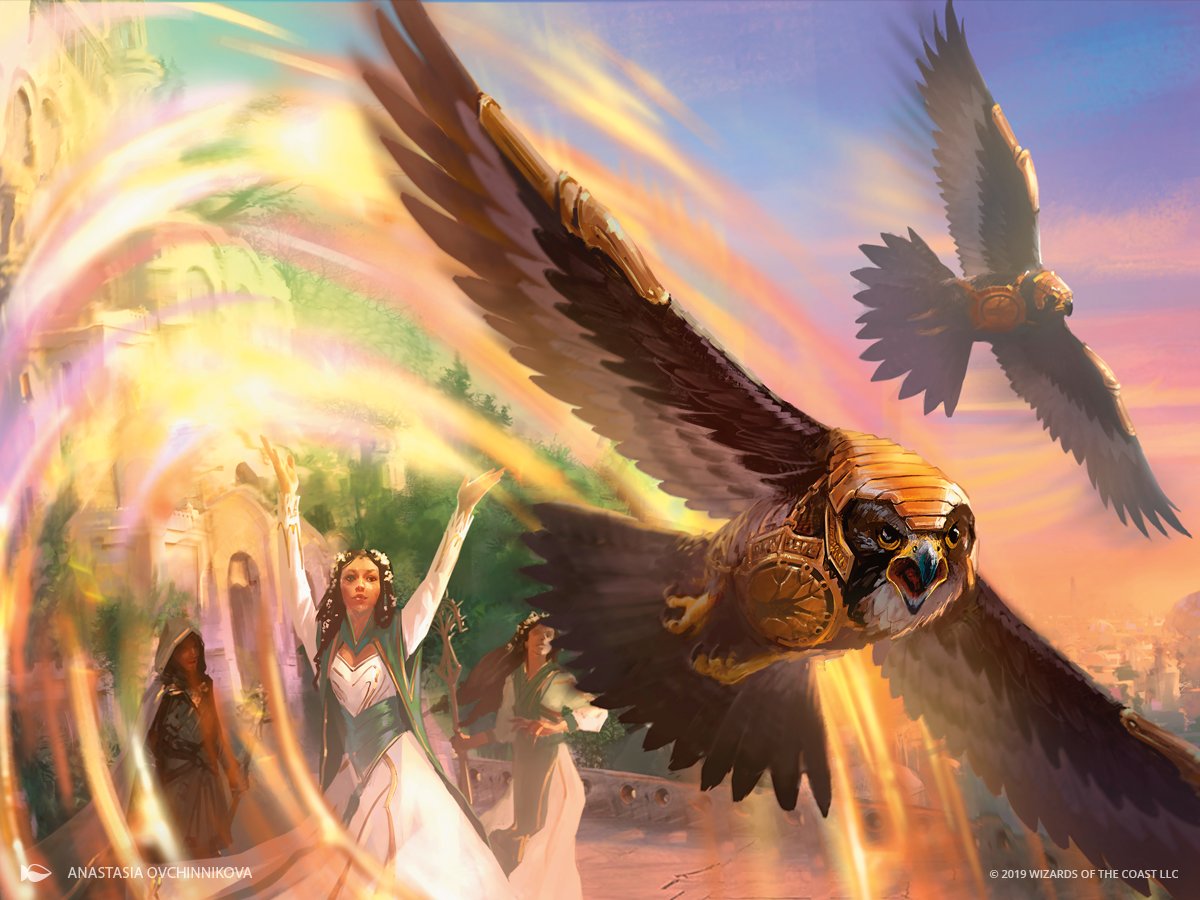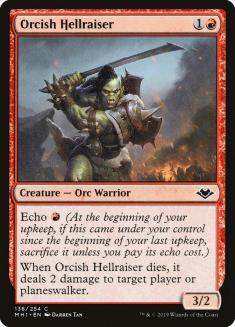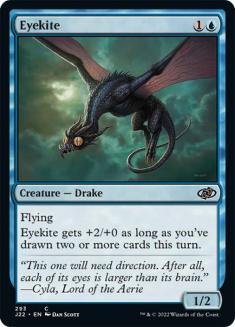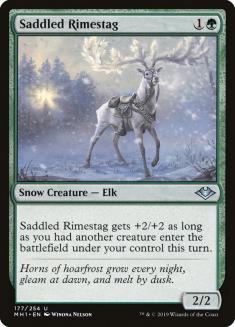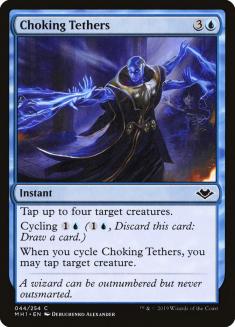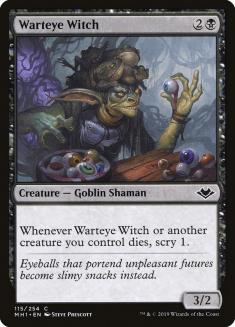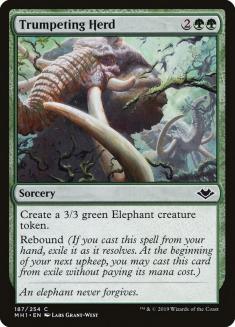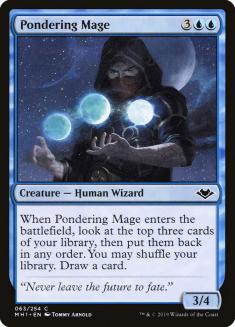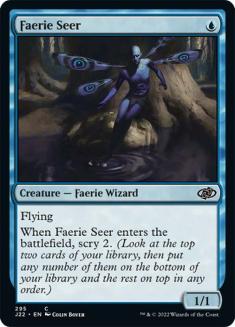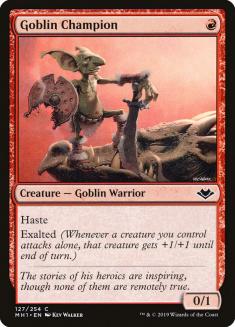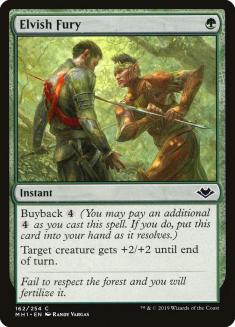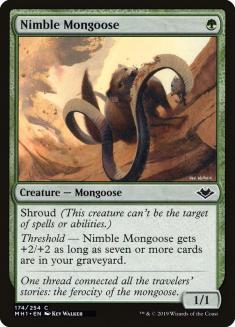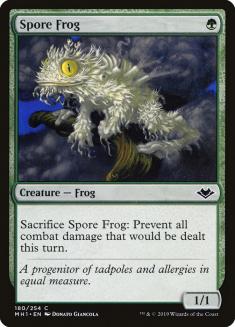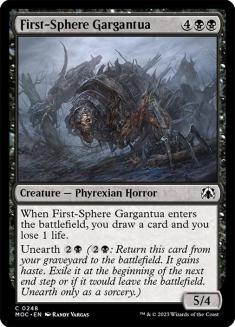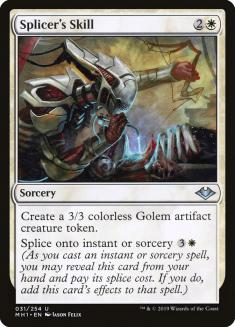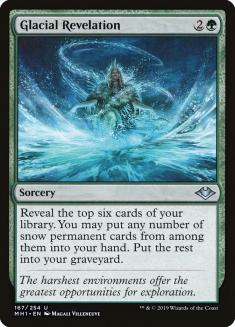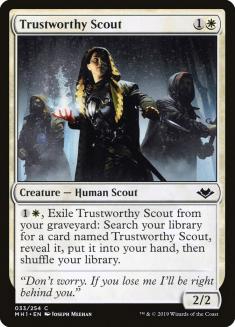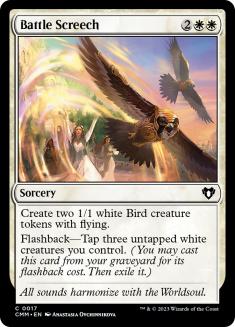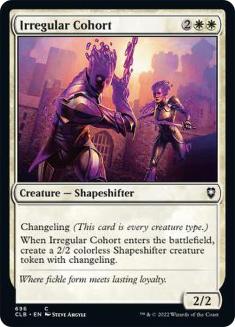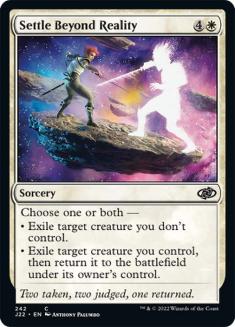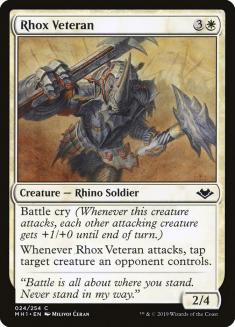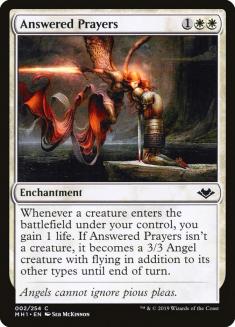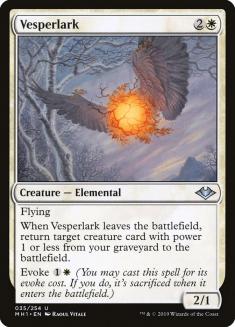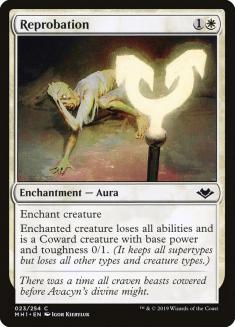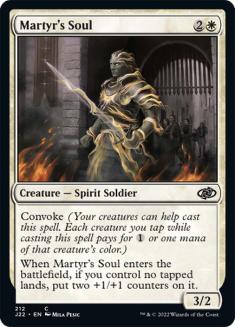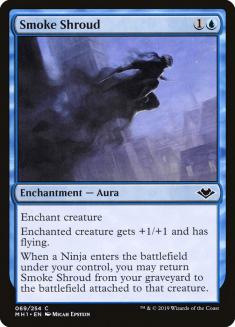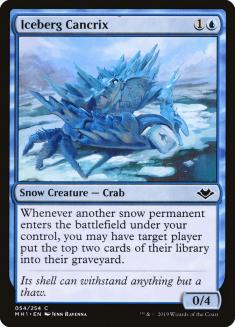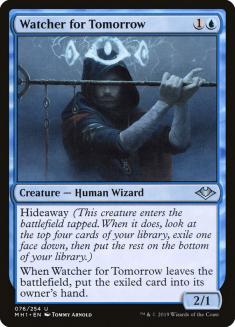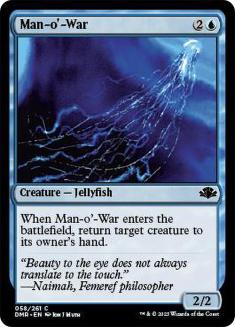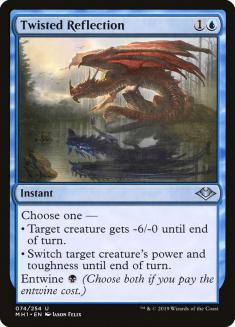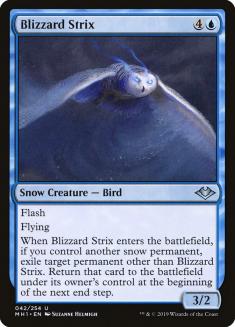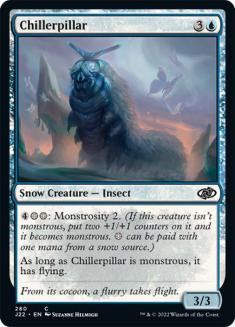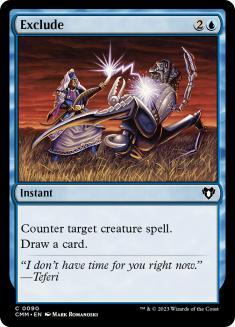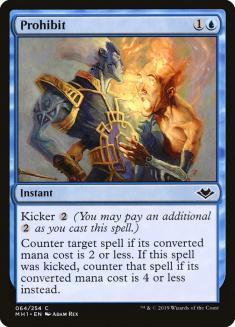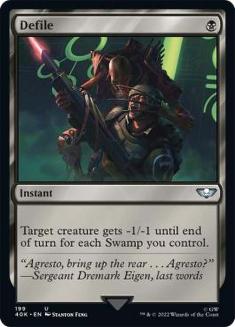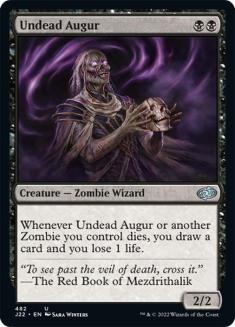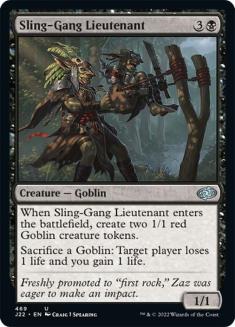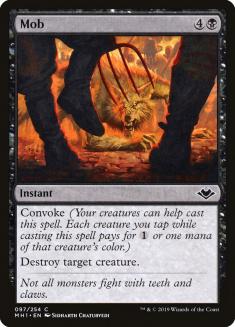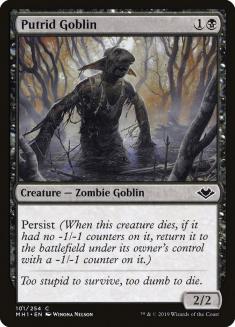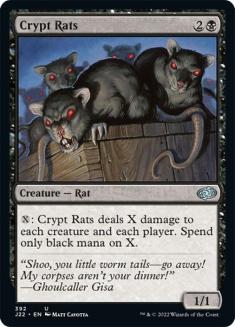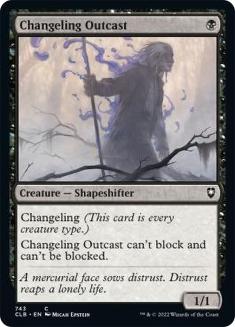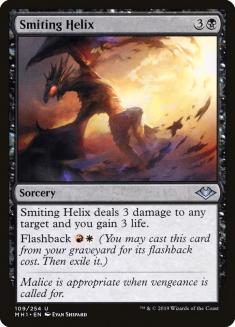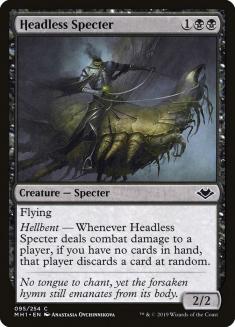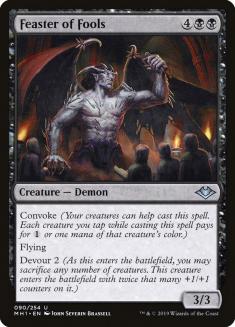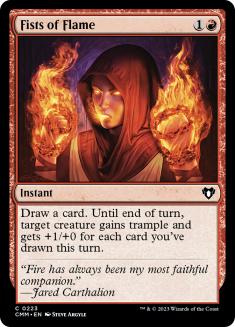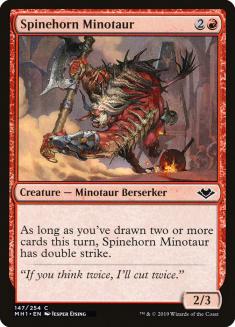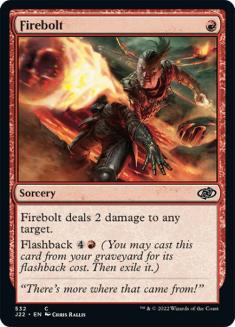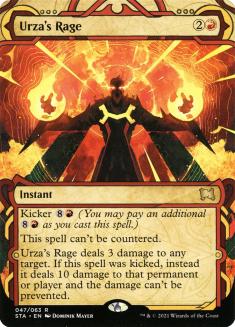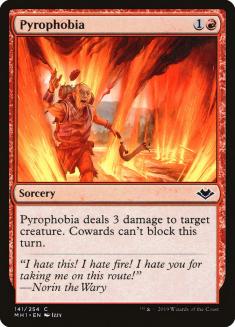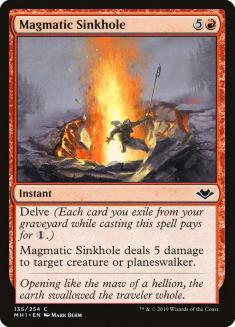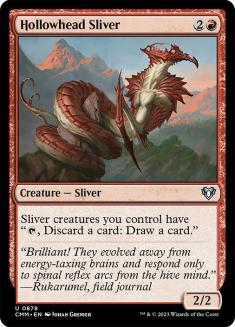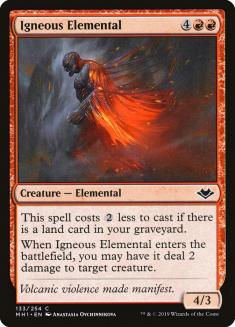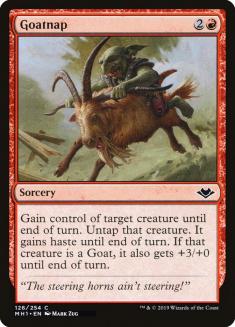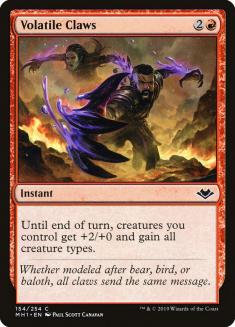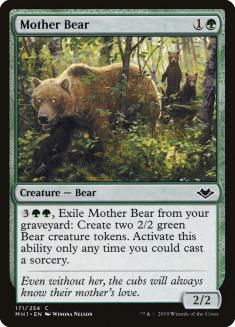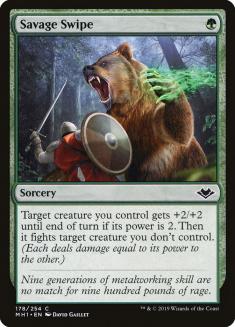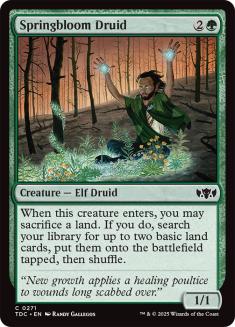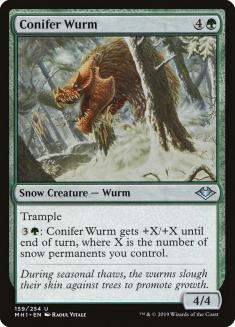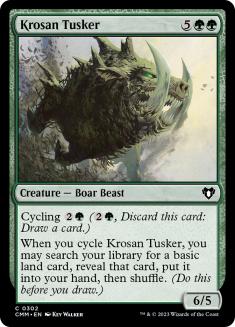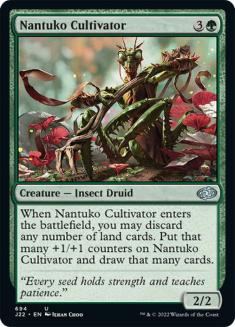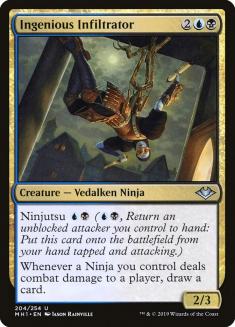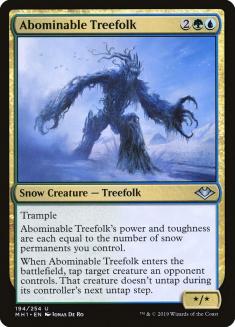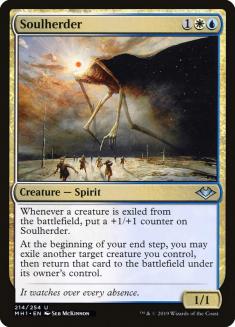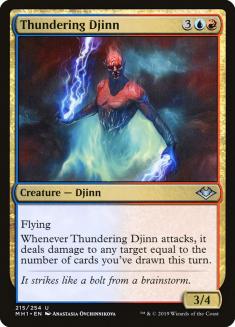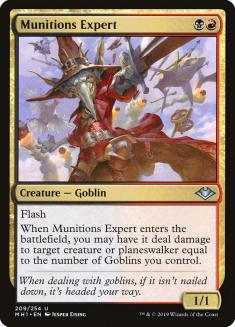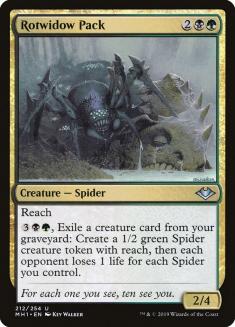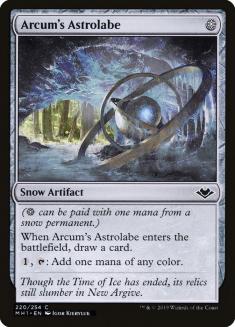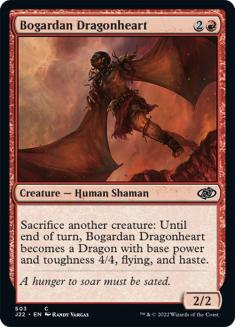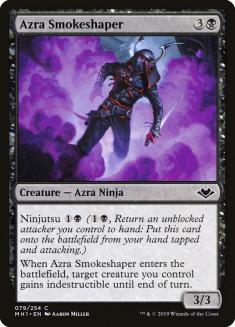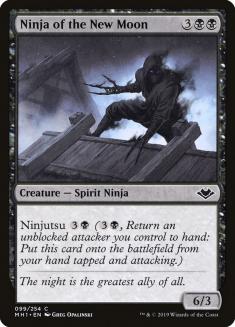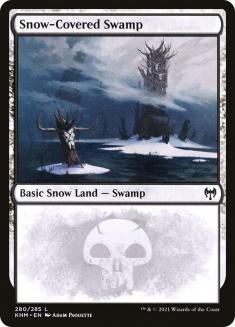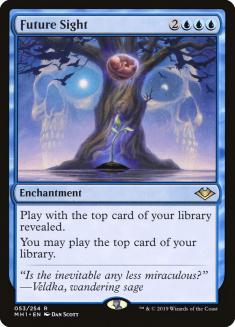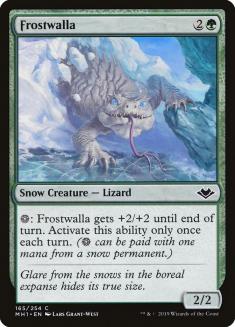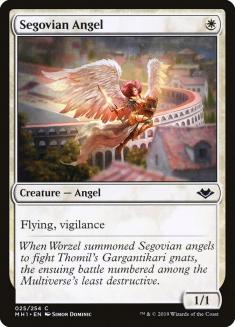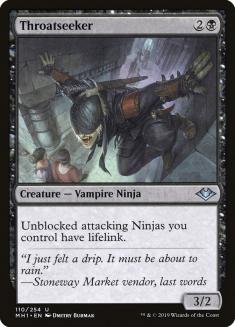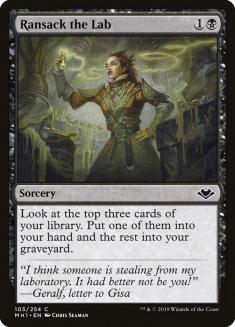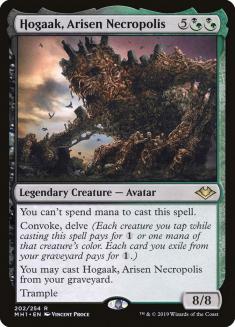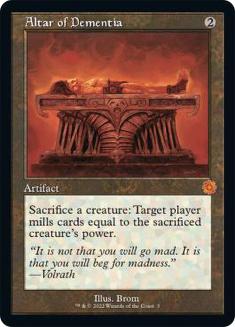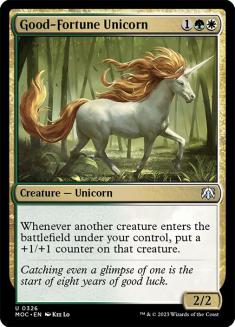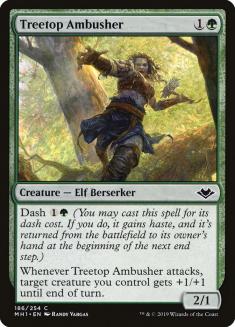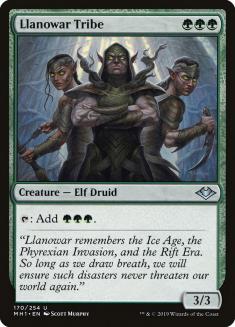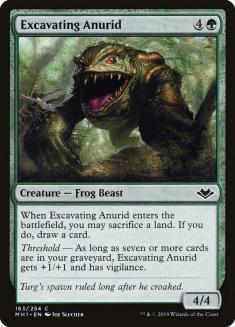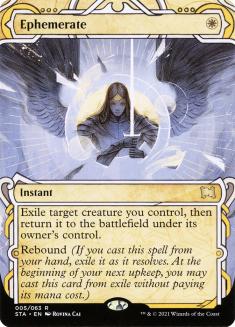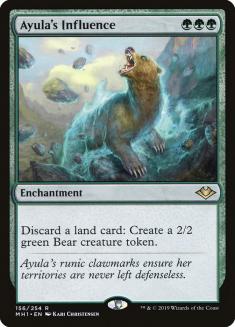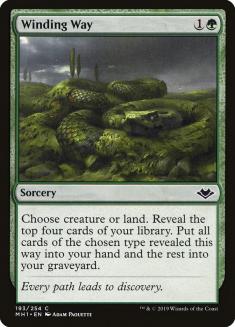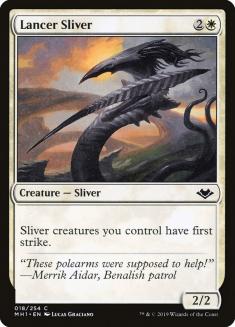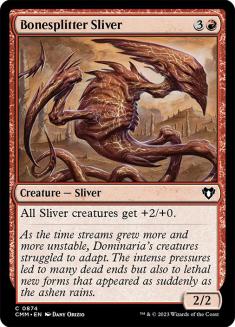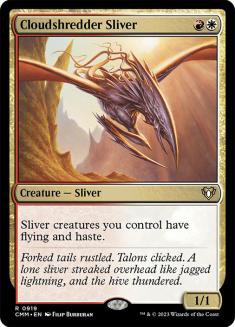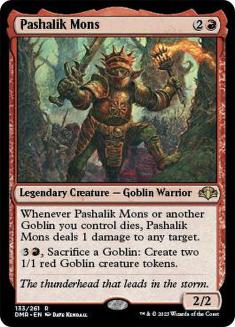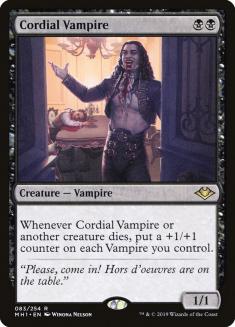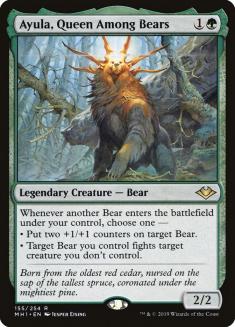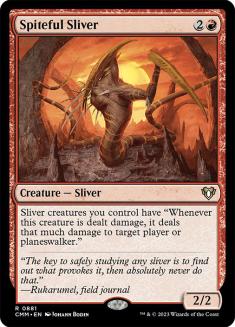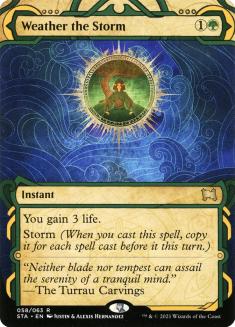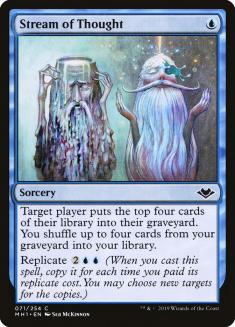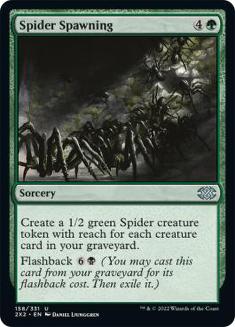Modern Horizons, one of the greatest Draft formats of all time, is coming back to Magic Online on Wednesday.
If you didn’t get a chance to play it last summer, I would absolutely give it a shot this time. The format has an absurd roster of build-arounds, matched with solid Limited play and the ability to weave any number of things together, so that each draft ends up feeling unique.
But that depth comes with complexity. If you haven’t played the format, or even if you have, here are all the details to get you up to speed with everything going on.
One, Two, Four
When in doubt, remember Modern Horizons is a format centered around one-, two-, and four-mana creatures.
Modern Horizons is loaded with aggressively slanted two-drop creatures. They hit for more than two damage a turn, they play well on Turn 8, they profitably trade, they induce other key synergies, or just all of the above.
The format is also loaded with ways to deal large amounts of burst, unstoppable damage, but unlike the typical Lava Axe or Falter they are attached to things that play fine when you aren’t trying to deal the last eight points of damage.
This pairing leads to a very common play pattern where someone hits a two-drop, the other person doesn’t, and then every turn the player behind the curve takes a little more damage, doesn’t actually trade well, suddenly ends up at ten life, and dies.
You either need two-drop creatures to compete in Modern Horizons Draft or you need two-drop plays that react well to their two-drops.
Another part of this is that the three-drops often just trade down when forced to block a two-drop. This isn’t Grizzly Bears into Centaur Courser, where your three-drop negates the earlier advantage. As a result, all of the three-drops that aren’t extremely overpowered are all stuck in the filler realm, and filling out your three-drop slot on the curve is only a priority if there’s a specific card that you’re synergizing with like Lancer Sliver or Bogardon Dragonheart. Remember: you can always cast multiple two-drops on Turn 4. You can’t do that with a three-drop.
Four mana is where you see a big jump in power, but it’s split between cards that can help you stabilize like Trumpeting Herd and those that hammer a game home proactively like Bellowing Elk. In reality, all the stabilizing cards also punish your opponent for being behind. The sheer number of powerful four-drops means it is easy to overload on them, but it hurts a little less than usual because they’re really good.
Add in the five-drops and six-drops all doing their own thing and going over the four-drops, and you have a format where decks want two-drops for efficiency and four-drops for power.
The one-drops are clearly a step down in per-card impact from the two-drops, but they often provide a card of leverage. In a format this proactive, being able to make multiple plays on Turn 3 or just get a step ahead on Turn 1 often cascades out the same way being up a two-drop does. And just like the two-drops, a Turn 5 Faerie Seer still does things, a Turn 5 Elvish Fury is an engine instead of an efficient trade, and so on.
Just stay away from the 1/1 ground bodies like Nimble Mongoose or Spore Frog unless you have some secondary reason to play them.
The joy of Modern Horizons is that you can do many things that aren’t just curve out. You just always have to respect the core principle that the format is going to apply pressure to you and have a plan to match it.
Colors
Modern Horizons is more a format of archetypes than colors, but it is still worth taking a look at what each looks like so you have some direction at the start of a draft before settling into a second color.
White
As with many recent sets, white is slightly underpowered, aggressively focused, and a bad support color. There are many minor synergy cards that are just slightly below par on raw stats. Or maybe it is just how bad Slivers were. Your white decks need an active reason to be white, and often that reason should be maximizing large numbers of the few white cards that work on raw rate.
Top Commons and Uncommons:
(Ordered best to worst)
Underperfomers:
Blue
Blue is solid, but starkly divided between tempo-synergistic aggro and often-Snow control. Be aware that while many of the control cards like Rain of Revelation play well in the aggressive decks, the reverse is much less true. The slow cards like card draw are also really powerful, but often have diminishing returns since you need to keep pace in the format.
The other hidden aspect of blue is it often finds itself splashing, both thanks to Snow promoting Arcum’s Astrolabe and five powerful multicolor uncommons (Twisted Reflection as the bonus fifth beyond the basic four signpost gold uncommons.)
Top Commons and Uncommons:
Underperfomers:
Black
Black is also extremely solid. It’s the reverse of white where your cards are good rates that play well attacking and defending with bonus synergies on top.
The core debate with every black deck is how deep you want to go into a second color. Mob and the generally solid curve-outs are fine as a secondary color, but Undead Augur and Defile aren’t. The easiest route to failure is trying to play nine Forests, eight Swamps or a similar manabase with many of these cards.
Top Commons and Uncommons:
Underperformers:
Red
Red is the other reverse of white. It has similarly unexciting cards in bulk, but they build to really exciting and flexible synergies. A key to red is realizing when your cards can cross over to make a new hybrid archetype where you have a neat synergy package from another color pair’s theme. Spinehorn Minotaur can be supported in Rakdos as well as Izzet and every color has a couple ways to dump lands for Igneous Elemental.
Top Commons and Uncommons:
Underperformers:
Green
Since we are all about drawing comparisons, green is the mirror of blue. It has a similar aggro-control split, but there are a lot of cards that are just great in all decks. My only word of caution is that it’s easy to take a bunch of solid green cards, end up with a solid deck, and not end up with a great deck. You rack up Draft trophies when you leverage the strong green cards as a core for some higher-power synergy.
Top Commons and Uncommons:
Underperformers:
Overall Top Commons and Uncommons
S-Tier (Better Than Most Rares)
A-Tier (Very Good First Pick)
B-Tier (Always in First-Pick Discussion)
The Best Archetypes
These decks are really good when they come together, rather easy to have come together, and still reasonable when you end up not having everything go perfectly.
Rakdos
Rakdos just does everything well: it’s efficient and grindy when behind, assertive and punishing while ahead, and all the synergy packages just meld together smoothly. You can Ransack the Lab and unearth First-Sphere Gargantua to draw cards for Spinehorn Minotaur, or sacrifice Munitions Expert only to Return from Extinction it. Or maybe you discard a land to Rank Officer to set up Igneous Elemental.
My only warning is that the traditional Goatnap plus sacrifice is often clunky and unreliable compared to the other options. You can play it with three or more sacrifice outlets, but I wouldn’t aim to be a Goatnap deck.
Dimir Ninjas
Dimir Ninjas was the most-hyped deck in Modern Horizons. This is largely on the back of Ingenious Infiltrator running away with games. More than other decks, your one-drops are critical since they enable your Ninjas at low cost.
The black common Ninjas are significantly less powerful than Moonblade Shinobi or the higher rarity Ninjas. Their higher base cost also leaves you more vulnerable to drawing the wrong mix of enablers, Ninjas, and ways to sneak them in. The other Ninjas have damage triggers that pull games back from behind. You will smash decks not playing the 1-2-4 game regardless, but when your Ninja decks lack Ingenious Infiltrator they will beat good decks with Moonblade Shinobi supported by removal and card draw, not heavy damage and tempo focused cards.
Snow Control
Snow Control is usually base-Simic, but the key to Snow Control is finding ways to utilize the non-Simic snow lands. You need to take the best snow payoffs early, resulting in you needing to find ways to get useful lands later. You also can’t rely on the right lands even being opened for your colors, because 60% of packs have a non-Simic snow land.
Take a look at where Springbloom Druid and Arcum’s Astrolabe are in those rankings, and realize they are even higher once you start going snow.
There are three big payoffs for this deck: huge higher-rarity snow cards, splashable removal, and powerful rares with restrictive costs you can easily meet.
Just make sure you move into snow for the right reason. Small upsides like Frostwalla aren’t worth micromanaging your draft picks to enable. Aside from fixing, the only snow common that carries the archetype is the third or fourth copy of Iceberg Cancrix.
Solid Decks
These decks can compete with the best decks, but have a lower power ceiling or require more specific cards.
White Aggro
The best white decks are textbook 1-2-4 aggro, but Answered Prayers is a three-drop exception that pushes towards sixteen-land, heavier-white, seventeen-creature shells. If your deck is very heavy on creatures and reliably ahead, it represents a powerful way to close games and win races.
Segovian Angel is just good in these decks. You should take them later in a pack, but be excited when they wheel. Once you hit three or four Segovian Angels, Martyr’s Soul becomes playable as a virtual 1W 3/2. Just rarely as a 5/4, since if you tap three creatures why didn’t they attack for more value?
Even in heavy white you aren’t excluded from off-color low-drops. The extra play on Turn 3 or Turn 4 is welcome.
The exception to the heavy-white bias in these decks is Selesnya, which lands closer to an even split. Watch your four-drop count in that color pair since there are so many good options.
Orzhov Changelings
Orzhov is halfway between Radkos and White Aggro. You have the good rates and cards with synergy basis of Rakdos, but your synergies are often Changeling-related which pushes towards the additive pressure of white and not the sacrifice-attrition of Rakdos.
Avoid cards that aren’t independently playable under the 1-2-4 paradigm unless you have a ton of Changelings. As I keep alluding, you can get synergies at good base rates, so you need a really good synergy to make a bad rate worth it.
The biggest trap for Orzhov is the mana. Commit hard to one color or neither, not both.
Golgari Dredge
Use the green cards that produce multiple bodies and black removal to stay stable, and then use Ransack the Lab milling First-Sphere Gargantua or other value to pull ahead.
If you open a Hogaak, Arisen Necropolis, don’t be afraid to go all-in on it. The card is also broken in Draft.
Golgari can also pick up multicolor aspects of Snow Control to support Smiting Helix flashback, or just the same splash elements base-Simic Snow does.
Another reason to splash is the Good-Fortune Unicorn plus persist combo for infinite sacrifices. While this combo can be assembled in Selesnya using Lesser Manticore, Selesnya isn’t naturally defensive and may as well just kill you with combat. Altar of Dementia naturally fuels the self-mill aspects, Unearth or Return from Extinction can recur milled combo creatures, and Ransack the Lab finds it all.
Izzet Draw-Two
Izzet Draw-Two is a full on tempo-combo deck. You make reasonable on-curve plays, get some damage in, and then around Turn 6 use a flurry of bounce, tapping, and pump to kill from nowhere. Thundering Djinn may as well be Glorybringer that kills something every turn in this deck.
Outside of being a synergy payoff, Eyekite is one of the few really good two-drops here. Take it highly.
The synergy pieces for other decks really underperform in Izzet. You have cantrip velocity chains that just get broken up by drawing dead ends like these.
Reckless Charge is already playable in this format, but it shines in Izzet. It’s really easy to magnify or carry through the full burst damage potential of two +3/+0s and a haste attack.
Red Aggro, Green Aggro, Gruul Aggro
A heavy 1-2-4 aggro strategy works in base red, base green, or full on Gruul. It’s just less reliable than white since people fight over those cards more, but other decks won’t take Treetop Ambusher or Orcish Hellraiser.
The base-green version also has a multiple Llanowar Tribe Mono-Green subarchetype where you maximize the high-cost green commons.
Bad Decks
There are some decks that were seeded in the format that really don’t work. Happens every time, but in Modern Horizons you really need to avoid the pitfall build-around strategies.
Azorius Flicker
The payoffs for flickering things are minimal for the setup cost. If you’re established on the battlefield and setting up spells for value, just win the game.
Soulherder is broken, but it’s a Simic card that takes white mana to cast.
Gruul Lands
There aren’t really payoffs for having multiple lands in graveyard. Igneous Elemental is a good card, but it’s best as a small part of any red deck that incidentally discards land a few ways.
Even the rare payoffs require a lot to go right.
Boros Slivers
Slivers are inherently fragile and undersized. You absolutely need Lancer Sliver plus Bonespitter Sliver to win a game. That means drafting a bunch of each and not just losing anyway to them dying or your opponent doing stuff.
Unless you get Cloudshredder Sliver, avoid this archetype.
Secretly Good Tribal Rares
These four tribal-based rares are just good. For Cordial Vampire and Spiteful Sliver, the card is just a solid effect even if it never works past itself. For Ayula, Queen Among Bears there are numerous changelings and if you ever trigger it you get massively ahead.
For Pashalik Mons, it’s both. Goblins are plentiful, it crushes games if enabled, and the card is standalone good. The other three cards fall in the top non-rares mix, but Pashalik Mons is a clear first-pick rare.
??? – The Sam Black Deck
There’s this thing. I’m far from the expert, but Sam Black is and if you want to know about the Splice Control deck, just read his breakdown.
I would warn against trying this deck in the flashback queues. Whenever there’s some narrow exploit deck that plays outside the realms of normal Magic in a Flashback Draft, everyone wants to try it. This is not a deck you want to fight over; it’s a deck you draft when Splicer’s Skill comes around tenth pick and Stream of Thought always comes the pick after that.
But this deck is the beauty of Modern Horizons. Sam derived this narrow archetype from dabbling in offshoots of normal Snow Control. I’ve talked about how other common archetypes can pick up little flares of added synergies, and Splice Control is just a natural evolution of that.
Even if you get the basics of Modern Horizons Draft and have seen it all, there’s always a little further you can dive. When you find the next undiscovered deck like Splice Control hiding away, let me know and I’ll add it to the archetype list.

